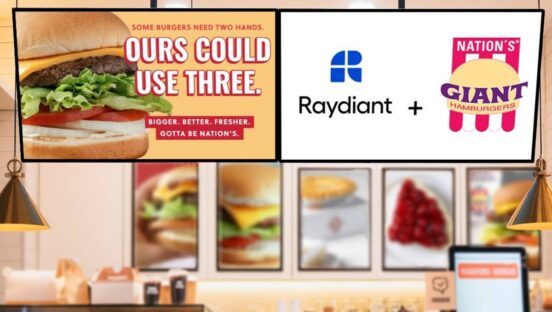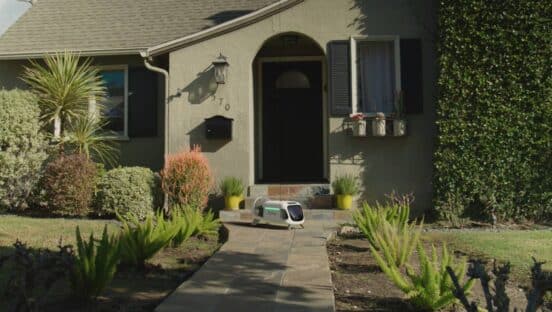The challenges the restaurant industry currently faces are unprecedented. On March 21, as the pandemic’s impacts fully struck the U.S., restaurant sales were down more than 81 percent. At the same time, the resilient response to the crisis has birthed an innovative, motivated mindset that may have positive and lasting impacts. Large, medium, and small chains in both the quick service and full-service spaces are navigating through a mix of interests, concerns, and anxieties. How those feelings are addressed going forward, given the uncertainty that the COVID-19 pandemic has created, will be critical to restaurant recovery.
One of the things that has changed (among many) is how people are now ordering and consuming food from restaurants, with heavy restrictions and limits on dining-in. Restaurant delivery has increased by more than 100 percent since March. The process of ordering online, which may be new for many consumers, is not particularly streamlined, as delivery service providers require each restaurant to use a separate tablet to receive orders, with each order manually entered into a system by a restaurant employee. This manual process can result in errors and missed orders, leading to lost revenue and negative customer experiences. At a time when customer loyalty is more important than ever, those negative experiences could have harsh consequences.
With this surge of online ordering during the current crisis, a spotlight is now shining on each restaurant’s ability to fulfill these orders accurately and quickly. Those who are pivoting to new online ordering formats have an opportunity to create memorable customer experiences, but if executed incorrectly, they could risk making subpar first impressions. It’s even more impactful if delivery and takeout models become mainstays even after the pandemic is over.
Re-Creating the Dine-In Experience
To capitalize on this opportunity, restaurants need to recreate their customers’ brand experiences on a consistent basis outside of the restaurant walls. In the current situation, how do restaurants take the loyalty they’ve established with their customers previously, and carry it over to an online ordering model through takeout and delivery? That includes the food, the ambiance, and the way customers are used to experiencing the brand within the restaurant.
Many restaurants have been thinking about this concept over the past few years with the rise of delivery and curbside pickup. But a good majority of restaurants today, and maybe over the next few months or even the next few years, are going to be experienced in this way. With that, there will likely be a rise in demand for additional capabilities to deliver food and menu items in different ways. Restaurants have already acknowledged this as portion of their businesses. Now, they may need to accept that it could be the primary way they complete transactions.
For food, the experience with temperature and freshness must be carried forward into a remote setting. Investments in technology may be necessary to ensure a restaurant is maintaining the brand expectation around “hot and fresh.” There may also be packaging created that allows takeout and delivery to be done sustainably—not only environmentally, but also financially.
Technology Empowering Safety
Companies will have to make their pickup and delivery models more efficient to hold on to profitability targets. Automation and efficiency in the order assembly, packaging, and fulfillment functions will be key. However, the priority will likely shift toward how to keep employees and customers healthy and safe. Restaurants will have to make investments to drive cleanliness and allow customers to feel safe when they purchase and eat their food. Contactless grab and go models will likely be an emerging option.
Combating Demand with Agility
That agility is crucial to allow restaurants to anticipate developing conditions and make necessary changes. Many already do this today when they vary their menus based on local tastes or certain geographies, or adjust the way ordering and fulfillment takes place. These restaurants are now implementing that agility in a more structured way, creating it within the operational controls from facility, to supply chain, to labor, as well as technology. All these factors will then depend on what is occurring that day or week, such as an event, to determine which features will be offered along the customer journey. Will a restaurant be allowing dine-in? Can it handle the demand that may be surging due to a holiday?
The restaurants that can implement that agility are going to succeed in this unpredictable environment. The ones that were already doing it back in March were having more success because of that ability to vary based on things like demand, weather, events, and conditions that were already occurring pre-COVID. For example, some quick-serves were doing 75 percent of their sales from the drive-thru and delivery. There could be a scenario where restaurants may not be ready to accept shifting demand, both from a supply chain and a labor perspective, without the agility to anticipate it. It will be essential to have the capability to create “burst” capacity, meaning scalability without necessarily having to add more restaurants or waitstaff, but rather, more kitchen capacity that can be flexible based on demand.
Ghost Kitchens, already trending before shelter-in-place orders were implemented, will continue to experience growth. According to Technomic, ghost restaurant sales are projected to rise 25 percent each year for the next five years, offering the industry a new area for focus and investment.
Seizing the Opportunity
In the past, restaurants worried about pickup and delivery diluting their brands. However, they may realize this as a great opportunity to grow a new revenue stream without harming their historical in-dining models. It can allow the brand to sustain itself around the variability of other events, not just this pandemic. For quick service, this is also an opportunity to take advantage of curbside as an option with increasing demand.
While the way they do business has drastically changed, restaurants must continue to engage with their customers. They want to eat at establishments, even though many of them can’t right now. The key is to find the best way to maintain a connection with them to ensure their brand loyalty lasts well beyond the current situation, as many of its impacts could be permanent.
Vince Crimaldi is a member of the Capgemini consumer products, retail, and distribution (CPRD) market unit leadership team, responsible for strategy development and industry-specific solutions for many of Capgemini’s largest retail, restaurant, grocery, and convenience store clients. He can be reached at vincent.crimaldi@capgemini.com












